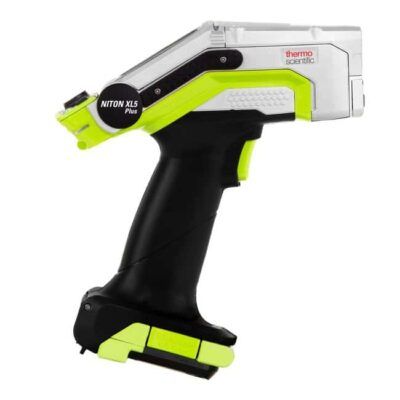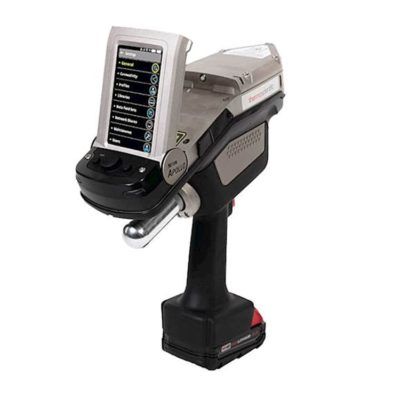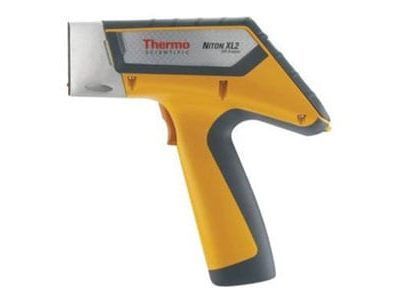Elemental Analyzers (XRF PMI LIBS) For Sale
Handheld XRF Analyzers – Your Ultimate Solution for Material Identification
Handheld X-ray Fluorescence (HHRXRF) analyzers are essential tools for multiple industries, ranging from mining to manufacturing. Serving as a convenient and efficient means of elemental analysis, these portable devices offer instant results with minimal setup requirements. Dive into the extensive applications of HHRXRF analyzers, their benefits, and how certain models, including the Thermo Scientific Niton and MFE Inspection Solutions’ handheld LIBS analyzers, can take your material analysis to the next level.
- What is Handheld XRF (HHRXRF)?
- What are Handheld LIBS (HHLIBS) Analyzers?
- Applications of HHRXRF
- Advantages of Using HHRXRF
- Key Differences Between XRF & LBS Analyzers
- Element Detection Range
- Role of HHRXRF in Carbon Steel Analysis
- Understanding Spectral Overlap
- Niton XRF Detectors: SiPin and SDD Models
- Contact MFE Inspection Solutions
What is Handheld XRF (HHRXRF)?
HHRXRF analyzers are portable devices used for examining the elemental composition of materials. Some manufacturers refer to filters, an integral part of these devices, as beams. They offer an efficient method for evaluating a wide range of samples, from rocks for mining to consumer products and infrastructure elements. Here’s an extensive guide to understanding how XRF works.
What are Handheld LIBS (HHLIBS) Analyzers?
HHLIBS analyzers are portable devices employed to decipher the elemental composition of materials. LIBS stands for Laser-Induced Breakdown Spectroscopy, a process where a highly concentrated laser is used to ablate the surface of a sample, generating a plasma. The light emitted by this plasma is then analyzed, providing detailed insights into the material’s elemental makeup. These analyzers have a wide range of applications, from assessing rocks for mining to evaluating consumer products and infrastructure elements. For an extensive guide to understanding how LIBS works, please refer to this detailed article.
Applications of HHRXRF
HHRXRF analyzers serve diverse industries with their multifunctionality:
- Mining and Exploration: Soil sampling, outcrop, drill core, grade control, and process control are some key applications in this industry.
- Environmental: These analyzers assist in soil remediation by detecting toxic materials like lead and help in lead paint action-level screening.
- Scrap Yards: HHRXRF is used for sorting scrap metals and identifying high-value materials.
- Manufacturing and Fabrication: It aids in positive material identification (PMI) and ensures no incorrect or off-spec metals or alloys enter the manufacturing process.
- Coatings: HHRXRF analyzers can measure the coating thickness on substrates up to a certain limit.
Advantages of Using HHRXRF
Handheld XRF analyzers bring a host of benefits:
- Quick Results: These analyzers provide qualitative and quantitative results within seconds.
- Portability: They can be easily transported and used in a wide range of locations.
- Ease of Use: With minimal setup requirements, these devices are straightforward to operate.
- Versatile Applications: They can be used in diverse fields such as alloy analysis, mining, soil evaluation, and more.
Key Differences Between XRF & LIBS Analyzers
There are key differences in the mechanisms and effectiveness of XRF & LIBS technology that can make one more suitable than the other for certain applications:
- Detection Range: XRF is better suited for heavier elements, starting from magnesium up to uranium on the periodic table, while LIBS can analyze the entire spectrum of elements, including lighter elements like hydrogen and helium that XRF can’t detect. This makes LIBS more applicable in situations where the analysis of lighter elements is critical.
- Surface vs. Depth Analysis: XRF provides analysis of the surface layer and slightly below, making it useful for applications such as coating thickness measurement and surface contamination checks. On the other hand, LIBS, due to its laser ablation technique, can provide depth profiling of the sample, making it valuable in applications requiring knowledge about the elemental composition below the immediate surface of a sample.
- Speed and Accuracy: XRF typically provides more accurate and precise measurements for heavier elements, and the analysis takes a bit longer. LIBS, however, can provide faster, although slightly less accurate, results.
- Preparation of Samples: XRF usually requires smoother and more uniform samples for accurate results, while LIBS can tolerate rougher surfaces due to its laser ablation method.
Element Detection Range
Magnesium is the lightest element that an HHRXRF can detect, while the heaviest one is uranium. However, it’s worth noting that uranium isn’t typically loaded into an alloy calibration.
Role of HHRXRF in Carbon Steel Analysis
When analyzing carbon steel, HHRXRF can help separate some grades by looking at the heavier elements. It is essential to remove any coating on top of the sample for a more accurate analysis. This process is crucial as it provides key information about the steel’s susceptibility to cold cracking and estimates the hardenability of the heat-affected zone (HAZ) within welds.
Understanding Spectral Overlap
In mineral exploration, mining, and soil analysis, spectral overlap can occur when different elements with similar energy affect each other. If an element is highly concentrated, more calibration may be required to detect the lighter elements that you’re targeting.
Niton XRF Detectors: SiPin and SDD Models
Niton XRF detectors come in SiPin and SDD models. The lightest element detected by the SiPin detector is titanium, while for the SDD (Silicon Drift Detector), it’s magnesium. SiPin and SDD models offer a wide range of applications across mining, soil analysis, and alloy identification. Here’s a detailed comparison of these models to understand their capabilities better.
Contact MFE Inspection Solutions
HHRXRF and LIBS analyzers are indispensable instruments offering non-destructive, accurate, and efficient elemental analysis. Serving a broad spectrum of applications, these tools provide comprehensive insights into material compositions, proving invaluable across various sectors including mining, manufacturing, environmental engineering, and metal recycling. Understanding their capabilities and benefits can significantly optimize your operations.
With over 50 years of experience with handheld XRF and LIBS analyzers, we at MFE Inspection Solutions are well-equipped to assist with even the most specific and demanding applications. Our team of qualified specialists is ready to guide you in selecting the analyzer that best suits your application or element spectrum.
Don’t hesitate to reach out to our team. Our goal is to provide you with the information and support you need to ensure your operations run efficiently and effectively. If you’re considering integrating an HHRXRF or LIBS analyzer into your toolkit, or if you have any questions about our offerings, please get in touch with one of our experts today.
Showing all 3 results



